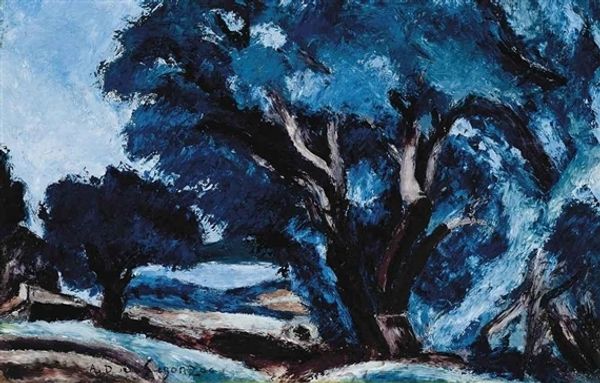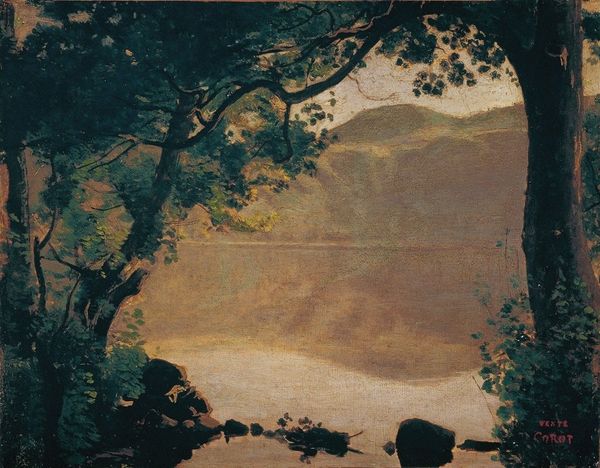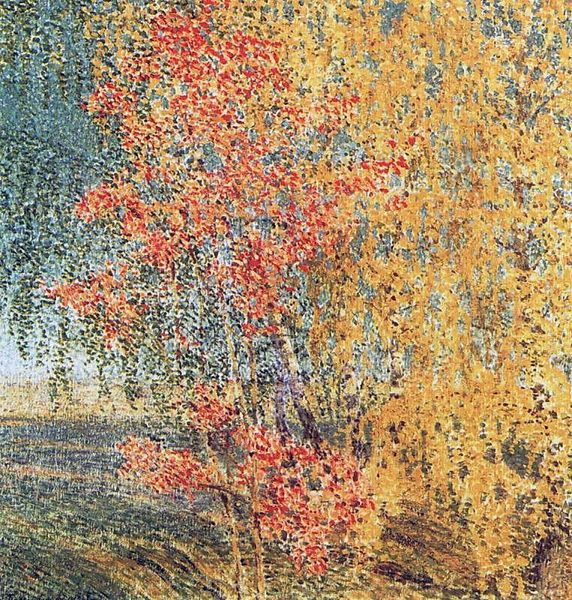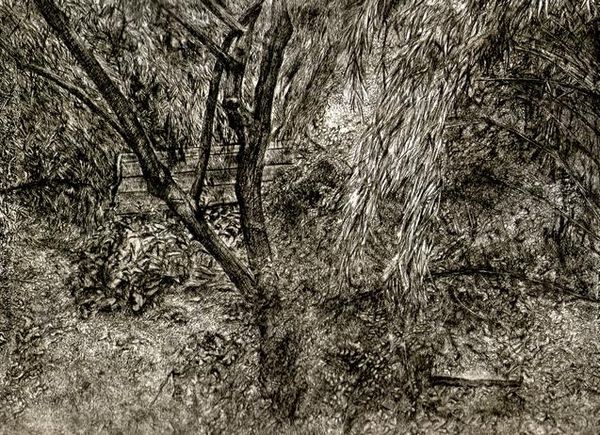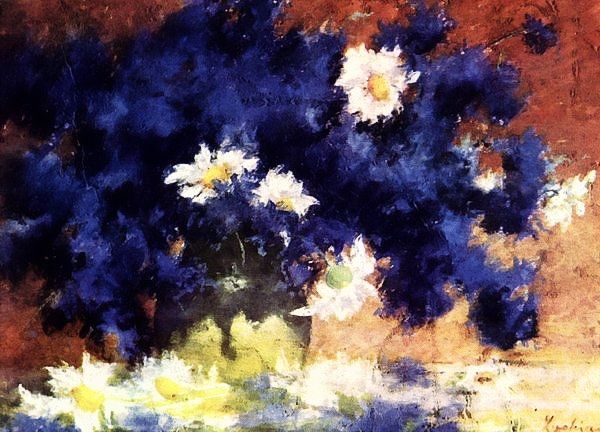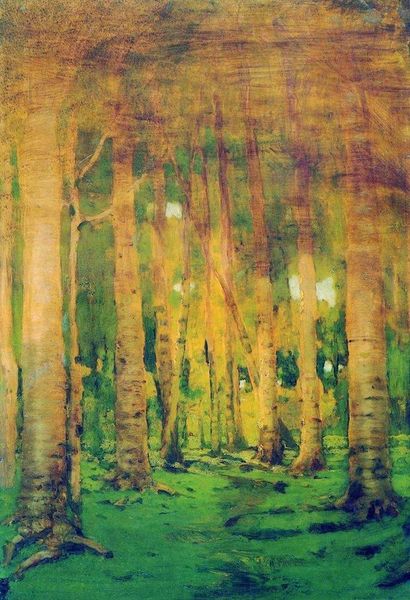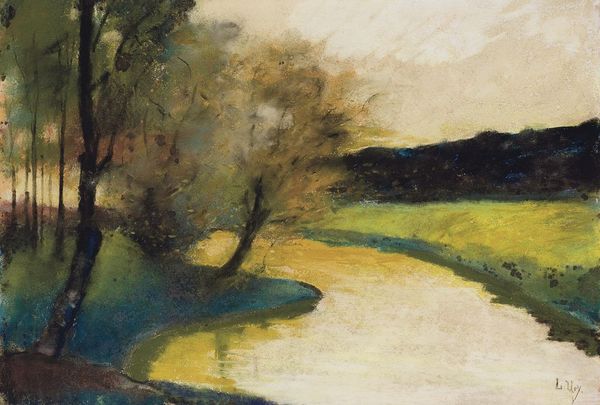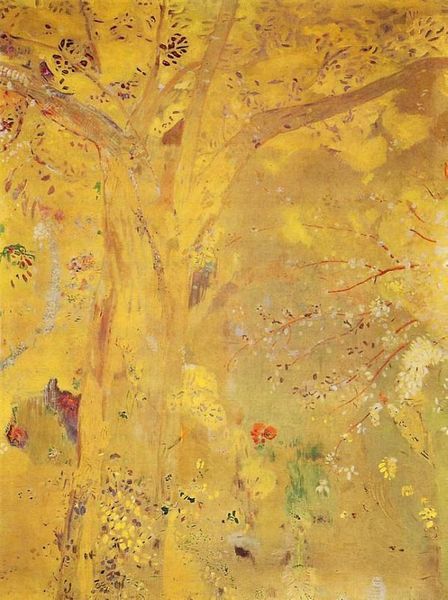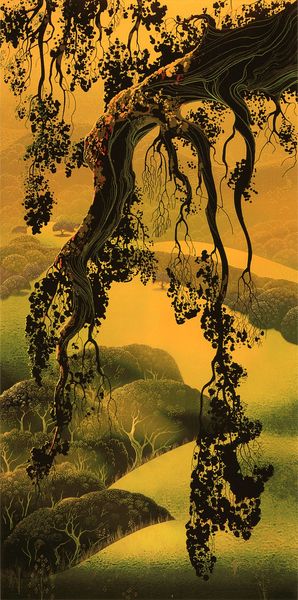
Copyright: Maxfield Parrish,Fair Use
Curator: Standing before us is Maxfield Parrish’s “Study for Autumn Brook,” dating to 1948. It’s an intimate landscape piece, executed primarily in watercolor. Editor: Immediately, the striking golden palette and stylized rendering create a feeling of warmth and a certain idealized serenity, almost like stepping into a carefully constructed memory. Curator: Parrish, as many know, employed a complex glazing technique to achieve such luminous effects, often involving multiple layers of transparent color. Thinking about his process makes me consider the tradition of landscape painting and how reliant it is on industrial means. The mining for pigments and their eventual mass manufacturing for public consumption has affected the relationship with how we interact and consume such scenes, like this landscape. Editor: Yes, the colors are strikingly resonant. Gold is linked universally with ideas about enduring life force. Water appears here in its archetypal symbolism; both destructive and life giving, ebbing, flowing, in a constant state of rebirth and flux. These associations make for an affecting commentary on mortality and resilience in the face of it. Curator: Indeed, but that potent glow he achieves comes directly from the materiality of the pigments. This tension is vital to interpreting these landscapes. Are these pristine, untouched visions of a nature untainted? Or artificial creations shaped by the industrial machine? Editor: Interesting! I was so focused on the psychological associations of color and symbol that the industrial dimension had receded somewhat. However, given his work in commercial illustration, the means by which those colors became so available cannot be overlooked. Curator: Ultimately, that dialogue – nature versus industry, authentic vision versus manufactured dream – I think is core to this, and all of Parrish's works. Editor: An important reflection that certainly shifts my own viewing now, drawing back that golden curtain to reveal deeper layers about human’s own consumptive imprint on the very subjects we idealize.
Comments
No comments
Be the first to comment and join the conversation on the ultimate creative platform.
